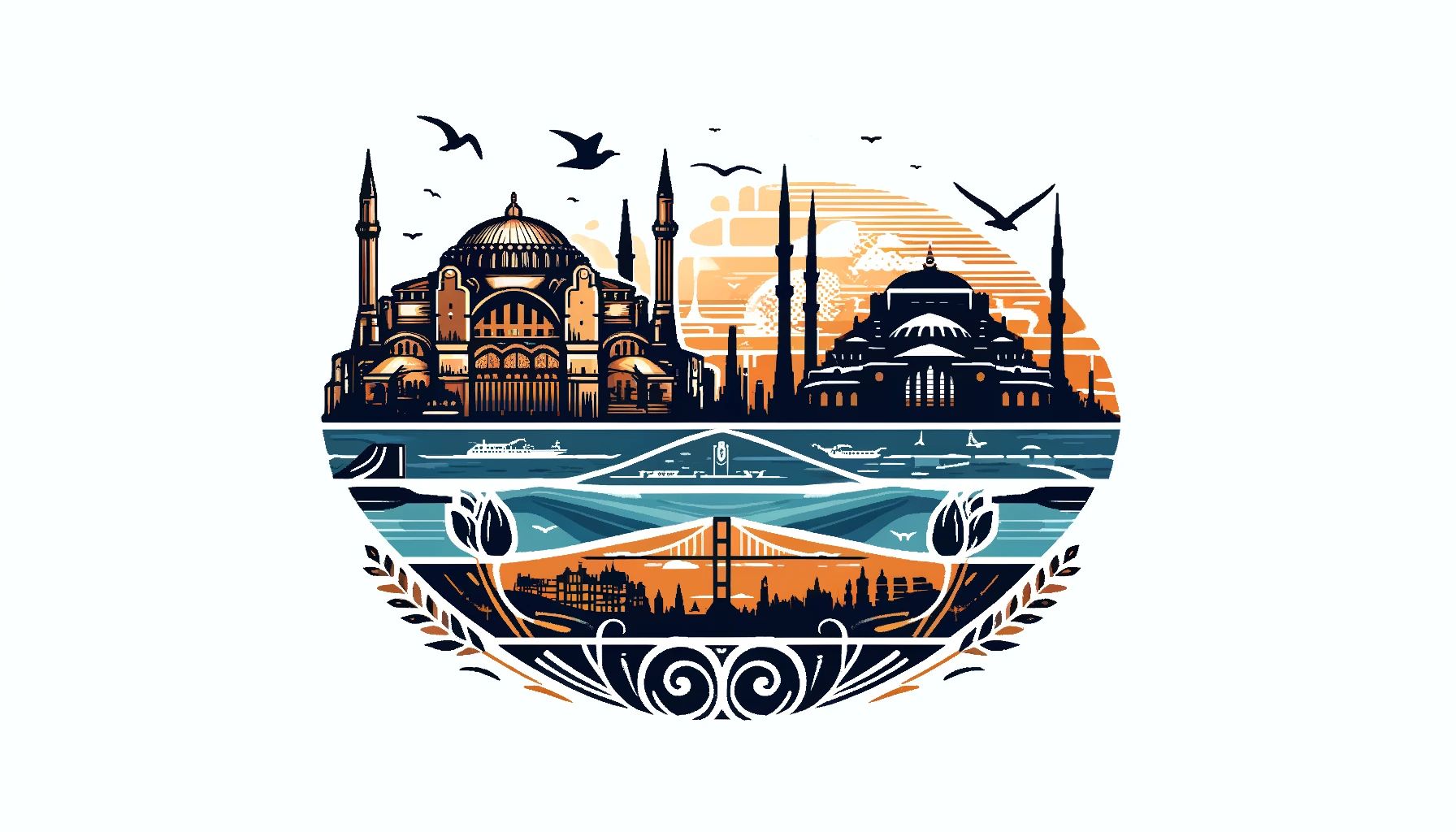The Blue Mosque, also known as Sultan Ahmed Mosque, was built between 1609 and 1616 during Sultan Ahmed I’s reign. It was designed to show off the power and artistic ability of the Ottoman Empire and to rival the nearby Hagia Sophia.
What makes the Blue Mosque special is its six minarets. This was unusual at the time because most mosques had fewer minarets. The number initially caused some controversy because it matched the sacred mosque in Mecca.
The mosque mixes features of traditional Islamic architecture with elements from Byzantine Christian buildings. It’s famous for its large, open courtyard and the beautiful tiles inside that create stunning patterns of flowers and geometric shapes.
While it’s still used for daily prayers, the Blue Mosque is also one of the most visited places in Istanbul. Tourists come from all over the world to see its impressive architecture and detailed decorations.
The style of the Blue Mosque has influenced many other buildings in Istanbul and beyond. Its layout includes a big central dome supported by four large columns, surrounded by smaller domes.
The Blue Mosque is part of the „Historic Areas of Istanbul“ recognized by UNESCO. This makes it an important part of the city’s history and culture.
The mosque’s walls are covered with over 20,000 blue tiles, which is why it’s called the Blue Mosque. These tiles light up in the sunlight, making the inside look very beautiful.
Building the mosque was a huge task. It involved bringing large stones and columns from far away, which was very difficult at the time.
The Blue Mosque is more than just a place of worship; it’s a symbol of Istanbul’s rich history and the artistic traditions of the Islamic world.
The Blue Mosque is famous for its beautiful blue tiles, six tall towers called minarets, and its detailed designs. It’s a key example of Ottoman architecture and a must-see for visitors to Istanbul.
The Blue Mosque was built starting in 1609 and finished in 1616. Sultan Ahmed I was the ruler who ordered its construction.
The Blue Mosque features classic Ottoman architecture, which includes a large main dome, several smaller domes, tall minarets, and intricate tile decorations.
The Blue Mosque is important both as a historical site and a place of worship in Istanbul. It shows the grand style of the Ottoman Empire and was built during the reign of Sultan Ahmed I.
It’s called the Blue Mosque because of the 20,000 handmade blue tiles decorating the inside. The walls higher up are also painted blue, adding to its unique look.
Yes, you can wear jeans to the Blue Mosque as long as they cover your legs fully. Remember to cover your shoulders too. Women should avoid wearing tops with thin straps, like spaghetti straps or tank tops.
Yes, women can pray at the Blue Mosque. There is a special area for women, but it’s also fine for them to pray behind men. If you don’t usually wear something to cover your head, you’ll need to wear a headscarf in the prayer areas. Prayer beads and books are available inside the mosque for you to use.
No, shorts are not allowed in the Blue Mosque or any other mosques in Istanbul for both men and women. Sleeveless shirts are also not suitable.
You can take photos in the courtyard, but inside the mosque, it’s restricted during prayer times to keep the place respectful. Be careful not to disturb people who are praying.
Yes, the Blue Mosque is still used for daily prayers and religious events. Visitors are welcome but should be respectful of the worship times.
The Blue Mosque has been a symbol of the power of the Ottoman Empire in Istanbul for over 400 years. Sultan Ahmed I built it to show that his empire was even greater in culture and architecture than those before it.
The real name of the Blue Mosque is the Sultan Ahmet Mosque. It was finished in 1617 just before Sultan Ahmet I passed away. The mosque is famous for its large domes and six tall minarets that stand out in Istanbul’s skyline.
Yes, the Blue Mosque lights up beautifully at night. The lighting highlights its domes and minarets, making it a gorgeous sight.
The Blue Mosque isn’t bigger than Hagia Sophia, but it was built by Sultan Ahmet I when he was 18 to try to be more impressive. It’s known for its beauty and has six minarets, which is more than most other mosques.
One, the inside of the Blue Mosque is covered with over 20,000 handmade ceramic tiles from İznik, featuring designs of flowers and patterns. Two, the mosque has over 250 stained-glass windows that let a lot of natural light inside, making the blue-painted walls stand out.
Hagia Sophia is older and has been used for different religions over its 1600 years. The Blue Mosque, built 1200 years later, aimed to be as grand as Hagia Sophia. Today, the area around both is filled with people, making it a lively place.
The Blue Mosque was built close to Hagia Sophia to show the strength of Islam right next to a former Christian church. This was a bold statement even 150 years after Istanbul was taken by the Ottomans.
It’s called the Blue Mosque because of the beautiful blue tiles on its inside walls. These tiles help make the mosque very beautiful.
There’s a story that the Sultan asked for „golden“ minarets but was misunderstood as asking for „six“ minarets. Since the mosque in Mecca also had six, the Sultan added a seventh minaret there to avoid any issues.
The main dome of the Blue Mosque is 23 meters across and 43 meters high. The mosque originally having six minarets was unusual and caused quite a stir at the time.
